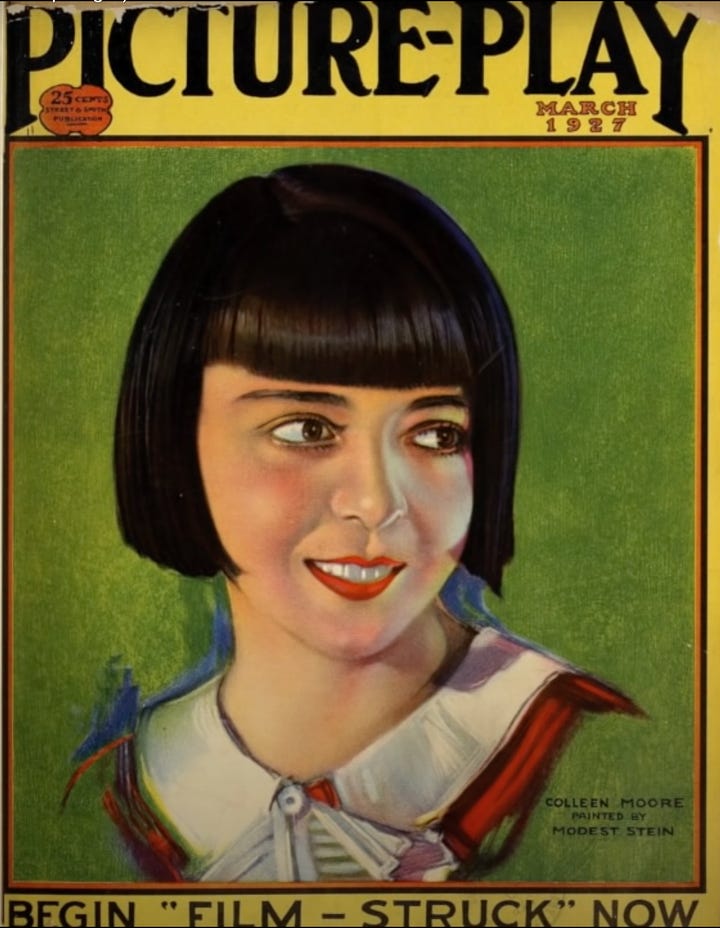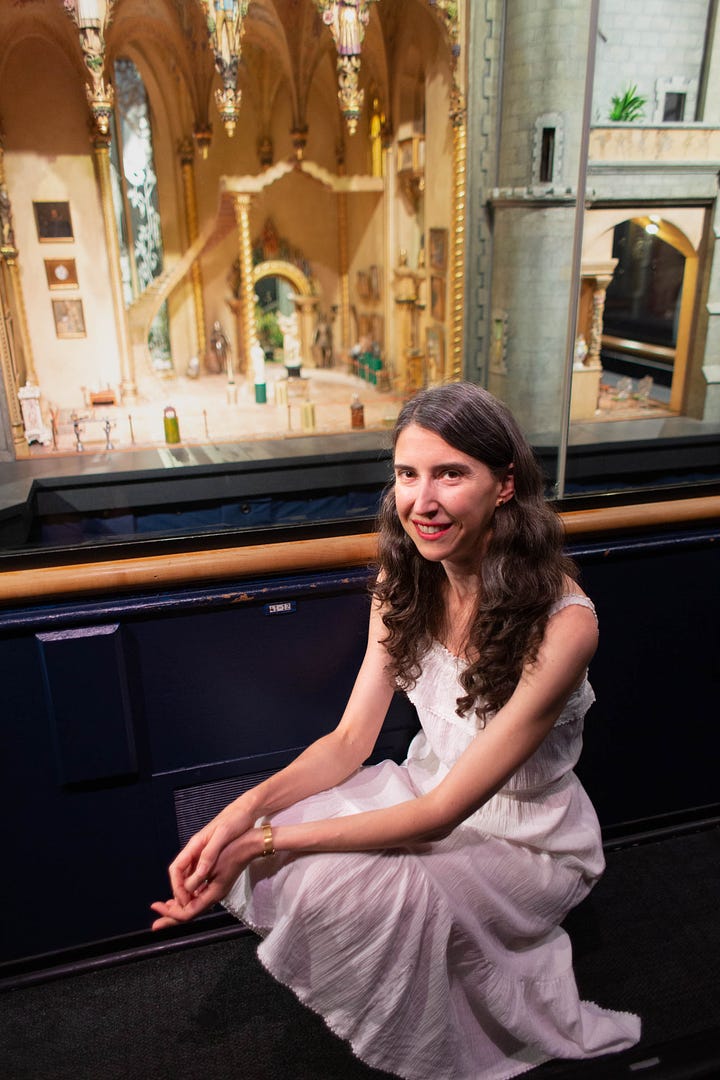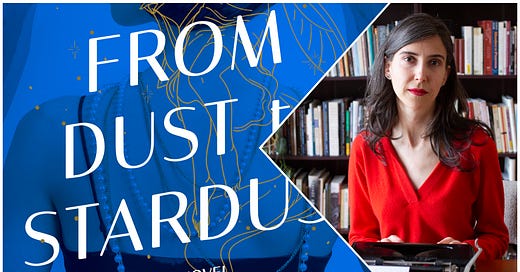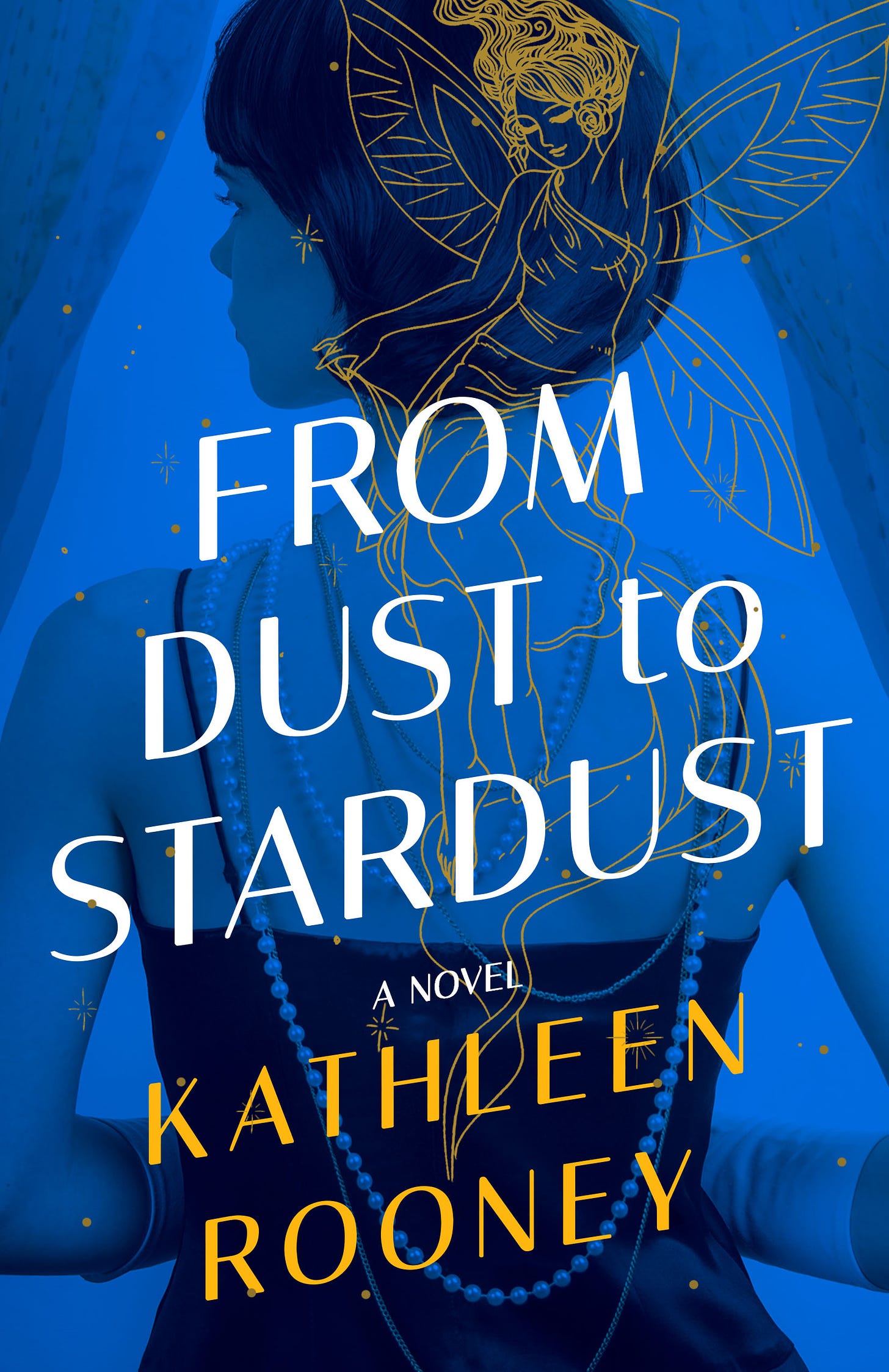Behind the book: How to make historical fiction "enchanting"
"The most difficult part of writing this book had nothing to do with writing at all." Kathleen Rooney on FROM DUST TO STARDUST and the "dispiriting" state of publishing.
More than anyone else I know, Kathleen Rooney has never written the same kind of book twice.
Her 2017 novel, Lillian Boxfish Takes a Walk, followed a fictionalized version of Margaret Fishback on a night’s-long walk from midtown to downtown Manhattan and back on New Year’s Eve, 1984. In 2020, Cher Ami and Major Whittlesey was written from the perspective of the most famous pigeon in history.
Now, From Dust to Stardust tells the story of Colleen Moore, a silent-film starlet from the Midwest whose nine-square-foot miniature Fairy Castle has been housed at Chicago’s Museum of Science & Industry since 1949. In Rooney’s novel, Moore is fictionalized as a protagonist named Doreen O’Dare.
For the Frontlist, I spoke with Rooney, her editor Alicia Clancy, and her art director Adrienne Krogh about writing, editing, and designing a one-of-a-kind historical novel set in Jazz Age Hollywood and beyond.


Kathleen Rooney, author
When and how did From Dust to Stardust begin for you?
It began the first time I laid eyes on Colleen Moore’s magnificent, otherworldly one-ton Fairy Castle at the Museum of Science and Industry. It seems like destiny now that I would end up writing a book based on her life and work because she, her silent films, her career providing financial advice to women, and her touring of her dollhouse during the Great Depression to raise money for children’s charities are all utterly enchanting and demand to be shared with the world.
What was your research process like?
Research is my favorite phase! You can do research forever and never grow bored. But researching forever does not lead to a manuscript. So I typically spend about a year or more just doing research and thinking of how I want to structure a project, filling my mind and heart with facts and images and anecdotes, then trying as best as I can to abandon those files full of information and just draft. Once I’m in the drafting stage, I use the strategy of only returning to the notes or research when I get stuck. Then I get unstuck as quickly as possible and keep going.
What was the most difficult thing about writing this book?
The most difficult part of writing this book had nothing to do with writing at all, but rather with selling the book once it was written. From Dust to Stardust is my thirteenth book so far, and every single time my agent and I go out with a new manuscript, it’s an opaque and dispiriting experience.
The publishing industry keeps getting consolidated — people keep getting laid off and the ones who remain are overworked and undercompensated. Such a situation is not one in which anyone — authors, agents, editors, publicists, readers — thrives. Capitalism, with its maximization of profits above all other concerns, is hostile to every aspect of life on Earth and that includes trying to sell a book.
Every time I find a home for a project, I feel as though I — and the people who help, support, and believe in me — have gotten away with something. As an author, I feel like Sisyphus, pushing that boulder up the hill. I make it to the top and know that soon, I am going to be right back at the bottom of the mountain again. But like Camus said, “One must imagine Sisyphus happy.” I’d rather push this particular boulder than just about any other, so I keep on pushing.
Alicia Clancy, editor at Lake Union
What drew you to From Dust to Stardust and to Kathleen’s writing in general?
What drew me in about Kathleen’s writing is her ability to fully transport the reader into a new time and place. In From Dust to Stardust, the setting details are evocative and immersive, immediately sweeping me back into days of Old Hollywood, the heady mix of excitement and fear in changing times bubbling over on every page.
Kathleen also manages to tackle difficult, timely topics through a historical lens, such as with the protagonist’s experience of domestic abuse, and balances the heftiness of such matter by sprinkling the novel with moments of hope and resiliency.
The slightest hint of magic that Rooney imbues within From Dust to Stardust through the inclusion of Irish folklore was the final touch that won me over — that feeling that no matter how difficult life can get, there’s always the lingering promise that anything is possible.
What made From Dust to Stardust a great fit for Lake Union?
At Lake Union Publishing, the Book Club Fiction imprint of Amazon Publishing, we are looking for stories that are both unputdownable page-turners and that also have the ability to spark lively, important discussions. From Dust to Stardust is at once a transportive historical fiction novel that both celebrates and criticizes the golden days of Hollywood, a moving examination of a woman living through domestic abuse and finding the strength to start over again, a coming-of-age story, and a romance novel. Its atmospheric writing and broad, commercial appeal balanced perfectly with depth of subject matter explored is what made From Dust to Stardust a strong fit for our imprint.
How did From Dust to Stardust evolve during the editing process?
The editorial process for Kathleen’s novel was almost exclusively about enhancement. The core elements were all already in place, so for our edits, we focused mainly on areas for expansion.
When it made sense to add more hope and moments of magic, a few added scenes to develop the relationships with some favorite supporting characters further, and highlighting opportunities where we could dig even deeper into the protagonist, Doreen’s, thoughts and feelings in particularly poignant moments. There was already a lot to love about the novel when it hit my desk — I just wanted more of the things I loved the most, which Kathleen was gracious enough to deliver.
Adrienne Krogh, art director at Lake Union
Could you share some alternate cover designs and tell me why they weren’t the right fit?
Unfortunately, we’re unable to share concepts we’ve reviewed because of image licensing restrictions, but the final cover was among the very first rounds of designs we received from Olga Grlic, the designer who I worked with on this title. We knew immediately it had the legs to become a great cover. The others in the mix used a color palette that would not have given this title the impact it would have needed. We were also drawn to the character and her turn of the head, suggesting she is moving into action.
What did you want the cover to convey about the novel?
We wanted this cover to convey the sophistication and glamour of the Golden Era of Hollywood and signal the epic life of the main character. The first version had all the elements needed for a strong cover for its overall tone.
Why was the final cover design the best choice?
While the first version had the right elements, the final cover has the energy, depth and vibrancy we wanted to achieve. The angled title type adds visual interest and energy that was missing from earlier rounds. Finally, the golden stars sprinkled about cleverly leverages the title to give readers an idea about the story they are about to enjoy.
Coming soon in the Frontlist
All the weird 2024 books I’m personally most excited for
Behind the book with Ray Nayler







